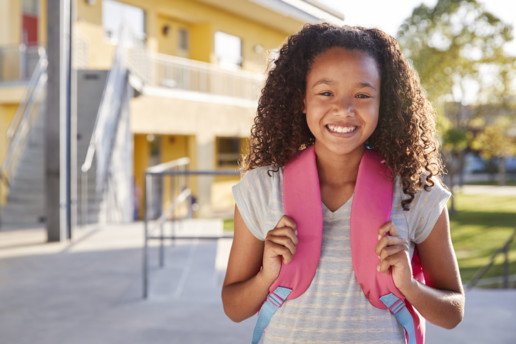
9 Ways To Make Backpacks Safer
School has started! With all the excitement of the first day photos and postings, making sure kids are standing tall, happy and smiling, we may overlook a sore spot in all those joyful photos - an overloaded and pain-inducing backpack.
Heavy, poorly positioned backpacks can be a disaster for developing spines and bones. An overloaded backpack negatively impacts disc alignment, setting your child up for decades of pain. An overloaded and improperly placed weight also distorts natural curves and forces your child’s shoulders and head forward, causing muscle strain in the back and shoulders. Narrow shoulder straps can interfere with blood circulation and cause nerve damage in the shoulders, arms and hands. Heavy backpacks increase the risk of your child falling, especially on uneven surfaces like stairs.
Nearly 66% of school nurses see children with injuries or pain caused by improper backpack use and about 60% of children will experience back pain before they are adults. Many children grow into round-shouldered, slumped adults because of poor backpack management.
So does this mean we ditch backpacks? Nope!
Backpacks, when used properly, are a solid option for keeping your child - and you - organized, with supplies at the ready. Using an over-one-shoulder bag such as a messenger bag, sling bag or cross body bag doesn’t distribute weight evenly, doesn’t engage the critical back and abdominal muscles and encourages users to lean to one side to compensate for the extra weight. Many schools prohibit the use of rolling backpacks due to tripping hazards.
So how do we make sure our kids are using backpacks safely?
1 - Make sure your child’s backpack has wide, padded shoulder straps, a padded back and lots of compartments so weight is distributed evenly throughout the pack instead of all dropping to the bottom. Have your child try it on in the store, so you know you’re buying one that’s properly sized, fitting between the shoulders and hips. Bonus - if you can find a backpack with a waist strap, get it.
2 - While empty, adjust the straps so the pack sits close to your child’s back, up towards the shoulders, with the bottom of the pack at the waist.
3 - Place heavier items in the bottom to keep weight off shoulders, helping your child stand straighter and taller.
4 - Ensure that your child’s backpack is no more than 15% of their body weight, with 10% or below being a healthier target if at all possible. That means if your 7-year-old weighs 50 pounds, they should carry no more than 7.5 lbs at any time. If your teen weighs 120, they should be carrying no more than 18 lbs.
No matter where or how larger adults are using a backpack, even for hiking and camping, a backpack should never weigh more than 25 lbs.
5 - Make sure your child is using both straps and the waist strap if available.
6 - Talk to your child’s teacher about keeping an extra copy of the heaviest textbooks at home so they don’t have to be lugged back and forth to school. You may also consider purchasing used textbooks online to have a second set.
7 - Clean out backpacks every week. Old homework and notes, dried pens and broken pencils add unnecessary weight and accumulate quickly if you’re not cleaning out regularly.
8 - Check the positioning and strap length of your child’s backpack at least once a week.
9 - If your teen’s classes are too far from their locker to make switching books out easily, ask for a change in locker location. If that’s not possible, make sure your teen is loading only the bare essentials needed for each class.
Following these guidelines for your children and for any adult who uses a backpack means that your child - and you - will be still be standing tall, happy and smiling long after the First Day of School photos are forgotten!
Do you have questions about backpack positioning, placement and safety - or any other questions about the health of your child’s bones and muscles? Just call 708-283-2600. Southland Orthopedics is here to help!

